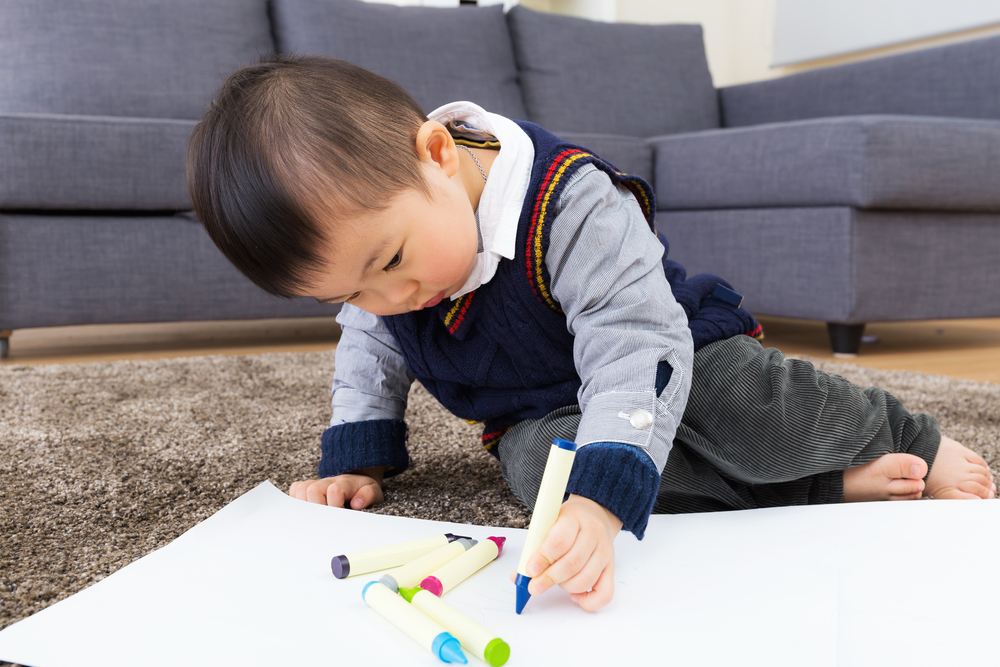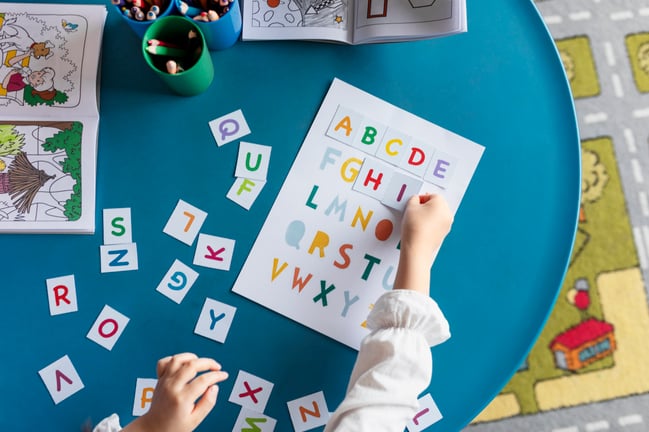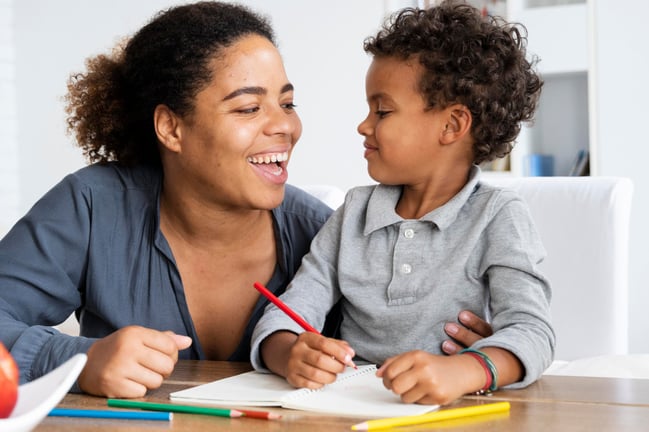
Communication, Language, and Literacy
Younger Preschoolers (33-48 months)
Components and Developmental Indicators
Younger Preschoolers (33-48 months)
Components and Developmental Indicators
Developmental Indicators
CLL Goal-1: Through their explorations, play, and social interactions, children successfully communicate for multiple purposes.

With prompting and support, initiate and carry on conversations, make comments, and ask questions related to the topic of discussion.

With prompting and support, provide responses to questions and pose questions to learn new information, clarify ideas, and have their needs met.

Follow simple multi-step directions with visual cues if needed.

Show understanding of increasingly complex sentences.

Demonstrate motivation to communicate in play and everyday activities (excitedly describe block structure they are working on as adult sits down to join them).
CLL Goal-2: Through their explorations, play, and social interactions, children speak clearly and use the grammar of their home language.

Communicate messages with expression, tone, volume, and inflection appropriate to the situation most of the time.

Speak clearly enough to be understood by familiar adults and children.

Communicate in longer sentences and use many of the conventions of grammar in their home language (plurals, tenses, prepositions), although may over-generalize grammatical rules (“There are lots of childs in our room.”).
CLL Goal-3: Through their explorations, play, and social interactions, children understand and use an ever-expanding vocabulary.

Use many newly acquired words to describe meaningful objects and activities in their environment, including words for parts of objects (tail, paw) and more than one word for the same object (cat, kitty).

Describe experiences and create short stories.

Repeat familiar songs, chants, or rhymes.

Use simple phrases and responses to peers in their dramatic play as they imitate familiar people and events.

Demonstrate understanding of an increasingly rich vocabulary.

Use cues in the environment to figure out what words mean (figure out the meaning of “breeze” when out flying kites and adult says, “Wow, look at your kite flying in the breeze!”).

Make up names for things using words they know (froggy-fish for tadpole).
Developmental Indicators
CLL Goal-4: Through their explorations, play and social interactions, children develop interest, motivation, and appreciation for literacy-based materials and activities.

Engage in reading behaviors independently for longer periods of several minutes at a time.

Show an interest in words and printed materials and other reading-related activities.

Listen to and discuss storybooks, simple information books, and poetry with a small group or individually with an adult.

Identify a variety of print resources, such as books and magazines.
CLL Goal-5: Through their explorations, play, and social interactions, children comprehend, use, and begin to reflect on and analyze information in books and other media.

Imitate repeated phrases in storybooks and story dialogue with some accuracy and detail.

Discuss storybooks by responding to questions about what is happening and predicting what will happen next, with prompting and support from an adult.

Use books and other media that communicate information to learn about the world by looking at pictures, asking questions, and talking about the information, with prompting and support from an adult.

Use their knowledge of the world (what things are, how things work) to make sense of stories and informational texts.

Relate personal experiences to events described in familiar books, with prompting and support.

Ask questions about a story or the information in a book.
![]()
Describe what they like or don’t like in a story or book.
CLL Goal-6: Through their explorations, play and social interactions, children begin to recognize basic concepts of print and discover that they can get meaning from print.

Demonstrate book-handling skills, such as holding a book right-side up and turning pages from front to back.

Recognize that print occurs in different forms and is used for a range of functions, such as telling people what to do, where to store things, and when they will have a turn with prompting and support from an adult.

Recognize familiar environmental print, such as “STOP” signs, and realize the meaning of the words.
CLL Goal-7: Through their explorations, play, and social interactions, children listen, identify, and respond to sounds, and develop phonological awareness.

Play with the sounds of language and begin to identify rhymes (make up silly-sounding words, repeat rhyming words).

Participate in rhyming and rhythmic experiences with books and other media, learning words and refrains well enough to repeat them and fill in missing words and sounds.

Repeat rhythmic patterns in poems and songs using words, clapping, marching, and/or using instruments.

Identify sounds and words in their daily environment.
CLL Goal-8: Through their explorations, play, and social interactions, children develop knowledge of letters and the alphabetic principle.

Demonstrate interest in learning the alphabet (draw abstract symbols on paper and ask adult, “What does this say?”).

Recognize and name some letters of the alphabet, especially those in their own name (may initially think all words starting with the first letter in their name IS their name).

Recognize that letters of the alphabet as a special category of print, different from pictures, shapes, and numerals.
Developmental Indicators
CLL Goal-9: Through their explorations, play, and social interactions, children use writing and drawing as means of communication.

Represent thoughts and ideas through marks, scribbles, drawings, and paintings (draw a picture of something they did during the day, indicate what they want for lunch with a mark under the picture of the food they want).

Communicate their thoughts for an adult to write, with prompting and support.

Engage in writing behaviors that imitate real-life situations (make marks to take food order during pretend restaurant play).

Explore typing letters on keyboard or another electronic device.
CLL Goal-10: Through their explorations, play, and social interactions, children grow in their understanding of letters and writing skills.

Use an assortment of writing tools and materials with purpose and control (pencils, chalk, markers, crayons, paintbrushes, finger paint, computers).

Make marks they call “writing” that look different from drawings (vertical series of marks for a “grocery list,” horizontal line of marks for a “story”).

Play with writing letters and making letter-like forms, using letters and letter-like marks to write their name.

Show they know that written words are made up of particular letters (point to the first letter of their own name, find the first letter of their own name in a book or where multiple letters are present).
Developmental Indicators
CLL Goal-11: Through their explorations, play, and social interactions, children demonstrate an understanding that there are multiple languages and begin to communicate in another language other than their home language.

Listen to peers and adults speaking in other languages to learn new information and show some understanding of the new language.

Engage in nonverbal communication with those who speak a language other than their native language.

Use simple words and phrases in a language other than their home language to communicate with adults and other children.



